Kolar Design and the entire project team are extremely honored to have the Theodore M. Berry International Friendship Park included as part of this article by Kim Cook | AP in The Washington Post. Alongside Corbin Design, C&G Partners, Ecocreative and especially the National Park Service; we spend every day focused on enhancing the user experience both indoors and out. Take a moment to find out more about the thought and design that goes into developing integrated systems for park and trail signage.
What was your last great experience out on a trail or in a park?
A LOT OF DESIGN GOES INTO THOSE HELPFUL PARK AND TRAIL MAPS
This article by Kim Cook | AP originally appeared in The Washington Post on April 4th, 2017.
This undated photo provided by C&G Partners and taken at the West Point Foundry Preserve in Cold Spring, N.Y. shows a freestanding trailhead which incorporates a cast-iron branding seal inspired by the original 1818 Foundry stationery logo, the site map and interpretive panels about early Cold Spring. The trailhead’s mesh metal structure is filled with brick fragments taken directly from the Foundry ruins. The kiosk’s canopy features laser-cut lettering identifying the Preserve. (C&G Partners via AP)
“A hike in the woods or a stroll through a preserve or park can be enhanced by a good trail sign — one that is informative, easy to see, yet doesn’t intrude on the vista.”
“It’s a lot to ask of a sign designer.”
‘”A wayfinding sign should be apparent when you need it. But when you’re not looking for directional information, its aesthetics should complement the environment so that it’ll feel as though it belongs there,’ says Jeff Frank, lead designer at Corbin Design in Traverse City, Michigan.”
Read Kim’s entire article at online – The Washington Post
THEODORE M. BERRY INTERNATIONAL FRIENDSHIP PARK
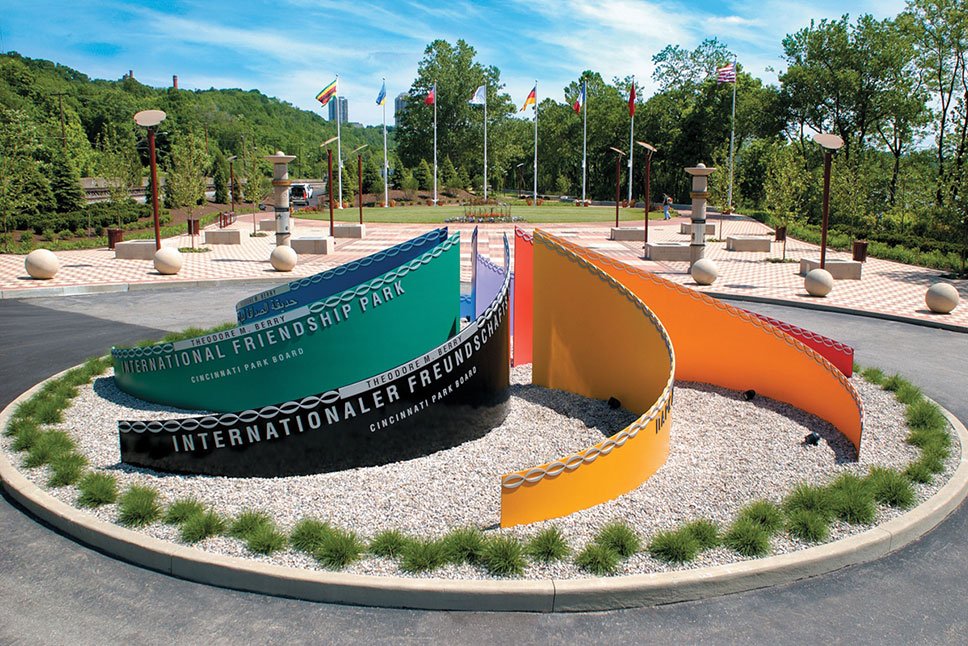

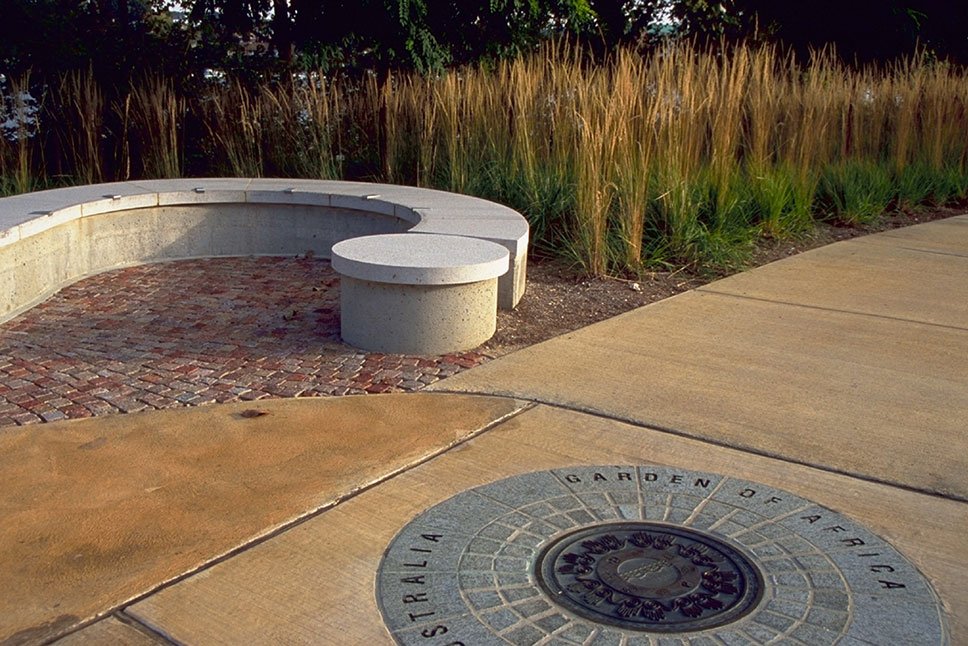
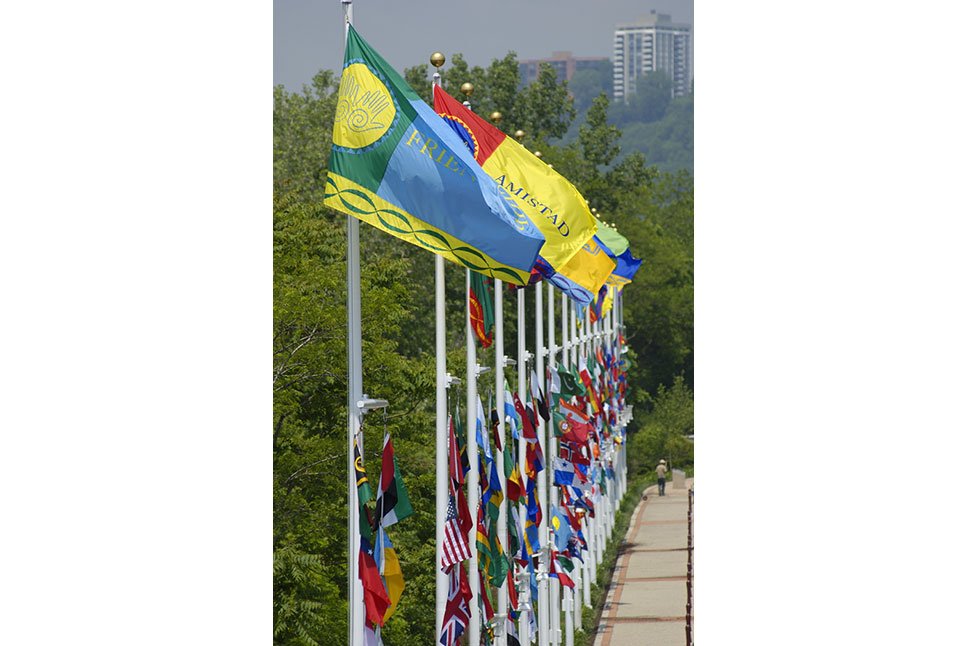
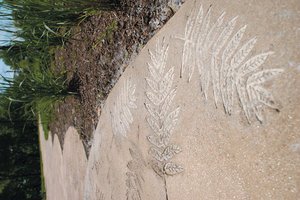
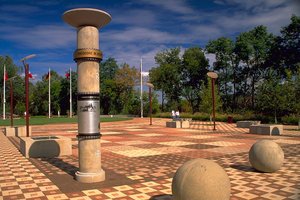

What if a park by design could teach equality and respect for all cultures, encourage people of all ages and backgrounds to meet and interact, and use art, ecology and garden to express universal ideals of peace and friendship? The design of Cincinnati’s Theodore M. Berry International Friendship Park, named in honor of the city’s first African-American mayor and foreign ambassador, emphasizes the things that bring people together. The park was envisioned to give life and purpose to an underutilized strip of land along the Ohio River.
A multidisciplinary team of landscape architects, architects, environmental graphic designers, and artisans collaborated throughout the design creation process. From a local perspective, the park needed to honor local river ecology, connect riverfront parks and trails, and highlight the city’s international relationships. From a global perspective, the park needed to honor and celebrate cultures. The concept of the park celebrates the natural linear river setting by creating a “friendship bracelet” with charms on the bracelet as major features.
TEAM
Architecture/Interior Design
Fearing & Hagenauer
Brand Experience
Kolar Design
Siebert Design
Fabrication
Geograph Industries
Landscape Architecture
EDAW
Human Nature
Check out www.kolardesign.net for more information on Cincinnati’s First International Friendship Park
Posted in Built Environment, Civic, Guidelines & Toolkits, Innovation, Storytelling, Wayfinding


